A guest post by Wendy Gunn
Inside: Want to teach your child to be responsible for their things? These ten tips will help!
Picking up after your kids on an ongoing basis gets tiring. It also doesn’t help prepare them for adulthood.
The good news is that with concerted effort and intentionality, you can learn how to teach your child to be responsible for their things.
In this post, we’ll look at:
- why teach your kids to be responsible
- how to manage your own stuff
- tips to help your child learn to take care of their things
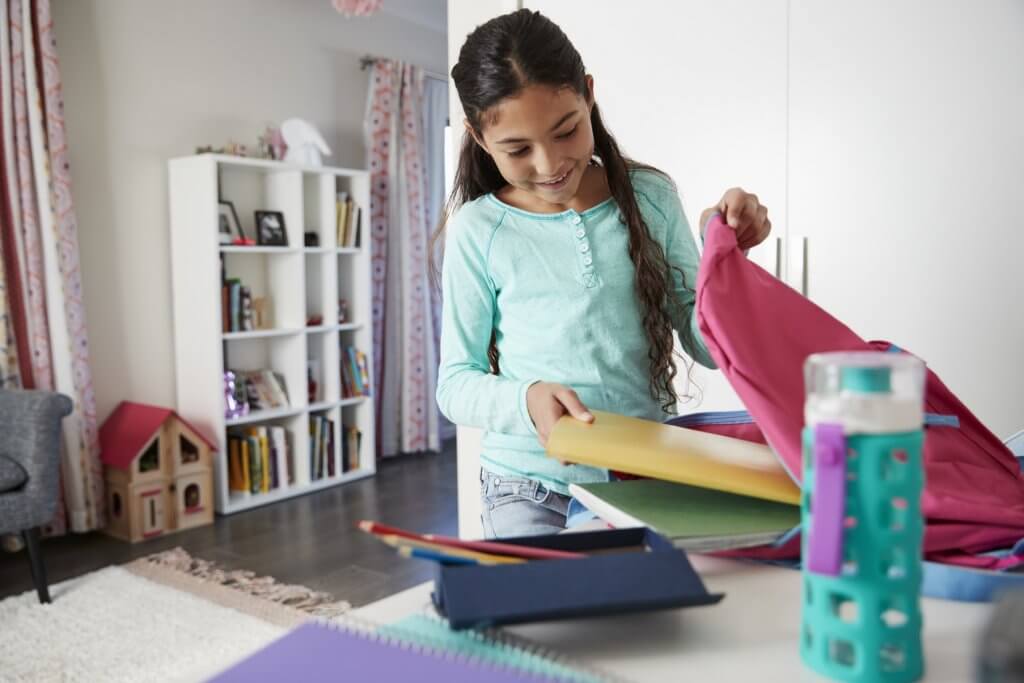
How to Teach Your Child to be Responsible for Their Things
When my kids were small, I wondered how it could be that such little people could require so many things. Then, as they grew, and had their toys, books, clothes, and treasures, keeping their belongings orderly seemed to me, at times, a near-impossible feat.
It also seemed that I was the one responsible for picking up all their things, and I dreaded the thought that I would be picking up after them for the rest of their lives.
We moms forget that our kids will grow up eventually. We mustn’t give up training our kids to become organized too soon.
My children are grown now, and both have become very mature and organized. But, I can empathize with you, as a mom, if your kids are at the stage where you wonder if they ever will grow up and become organized.
I remember wondering if they would indeed become adults who could function in society, hold down a job, take care of their homes and possessions, and be organized and mature.
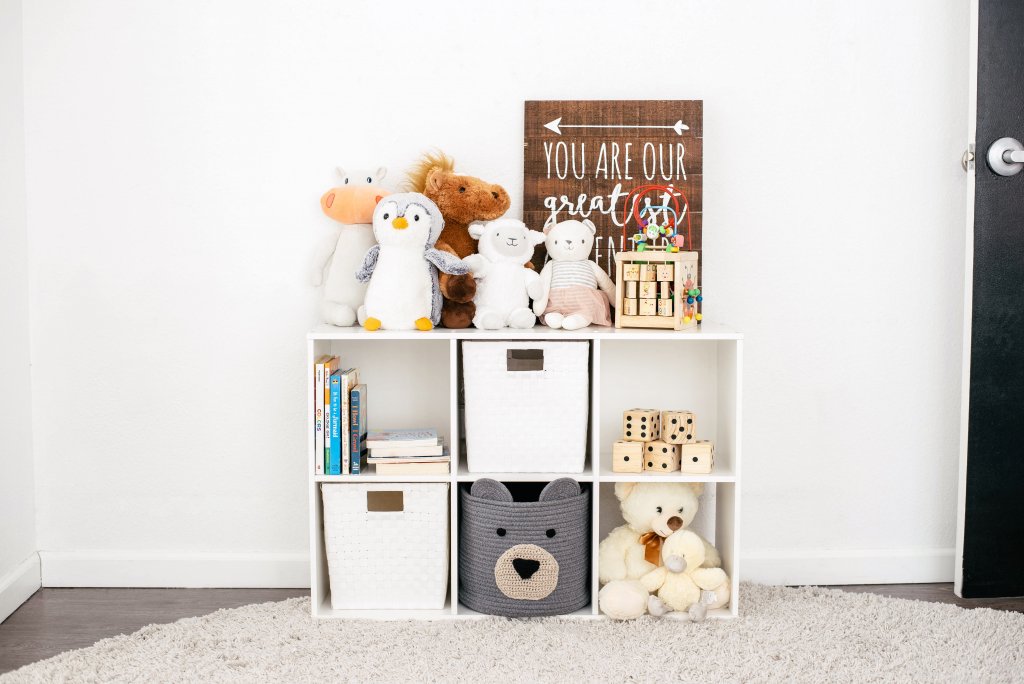
Responsibility
As kids, they often didn’t take good care of their belongings because they were children, tweens, and teens who had not grown up into the adults they would someday become. It takes time and persistence in training, for the character qualities of organization and orderliness to develop.
We learned tricks, taught skills, modeled organization, and prayed for their increasing maturity. We learned and put into practice some simple systems, which helped us to keep things in order.
Continue to train and model what you expect. Consequences are necessary sometimes, but often we should just allow that they’re still learning. But, make sure your children know what you expect.
I will share with you what we learned to do, and if you practice these tips and are consistent in training and modeling, you’ll find your children mature and become more orderly, too.
10 tips on how to teach your child to be responsible for their things
1. Own fewer things
Choose what to bring into your home in the first place. It was an enjoyable activity when our children were young for our family to browse through thrift stores.
We obtained some real deals, it’s true! However, the low prices tempted us to bring home more than we needed, and most of what we bought was poor quality. I’ve learned that it’s challenging to get rid of things once they come into your house.
Therefore, my advice is:
Don’t bring home many things in the first place. Own fewer things.
Some families decide that minimalism is the best choice for them, but even if you don’t want to be that extreme, so you can still choose to simplify.
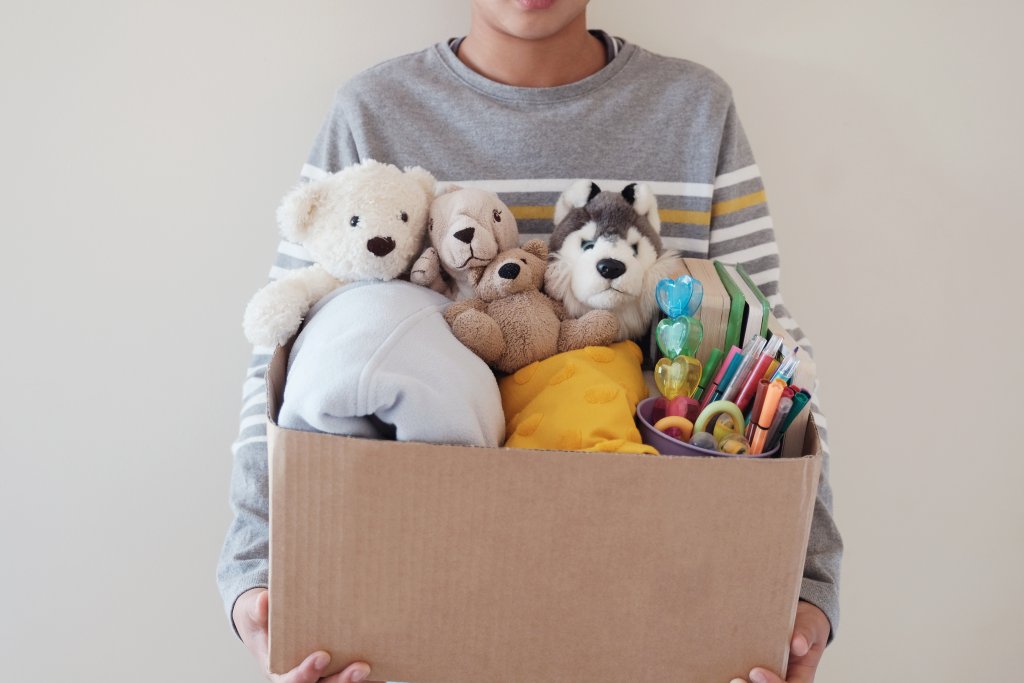
In order to you teach your child to be responsible for their things, it’s easier if they have fewer things.
If your children are like mine were, they use the tactic of bringing their “finds” to you in the store and then begin to beg. Don’t give in to your children’s begging. Teach them it doesn’t work.
Have rules in place to guide your purchases and think twice about what you bring home. Have specific rules for shopping at a garage sale, thrift store, Target, or Walmart and remind your children of them before you go out the door or before you enter the store.
We established the rule that if they begged for something, the answer was an automatic, “No.”
2. Have guidelines for what you will buy
One guideline might be, “You may buy one toy” (a specific one they’ve been saving for, perhaps), or if going to a garage sale, “You may spend one dollar.”
Another guideline might be they must pay for it out of their own money or savings. You may decide ahead of time that they may purchase something with birthday money, for instance.
It’s important to teach your children how to handle money in a culture that is focused on consumerism.
Plan Your Purchases
Plan your purchases. I recommend you determine that it will be a rare and special occasion when you buy something for them without planning to do so and then let them know that is what to expect.
When they have fewer belongings, they will treasure each one more. When it is uncommon and rare that you buy something for them, they appreciate it more.
If they know that if they beg, the answer is no, they will stop asking and stop expecting to get something every time you go shopping. Now you felt relief and peace sweep over you, didn’t you?
Calmly explain beforehand the new rules. You are in authority. You’re the parent. You may simply say, “No.”
You don’t have to have a reason for your no. But, if this is a change in your behavior, I recommend you don’t spring it on your family. You’ll have more cooperation if you communicate with them.
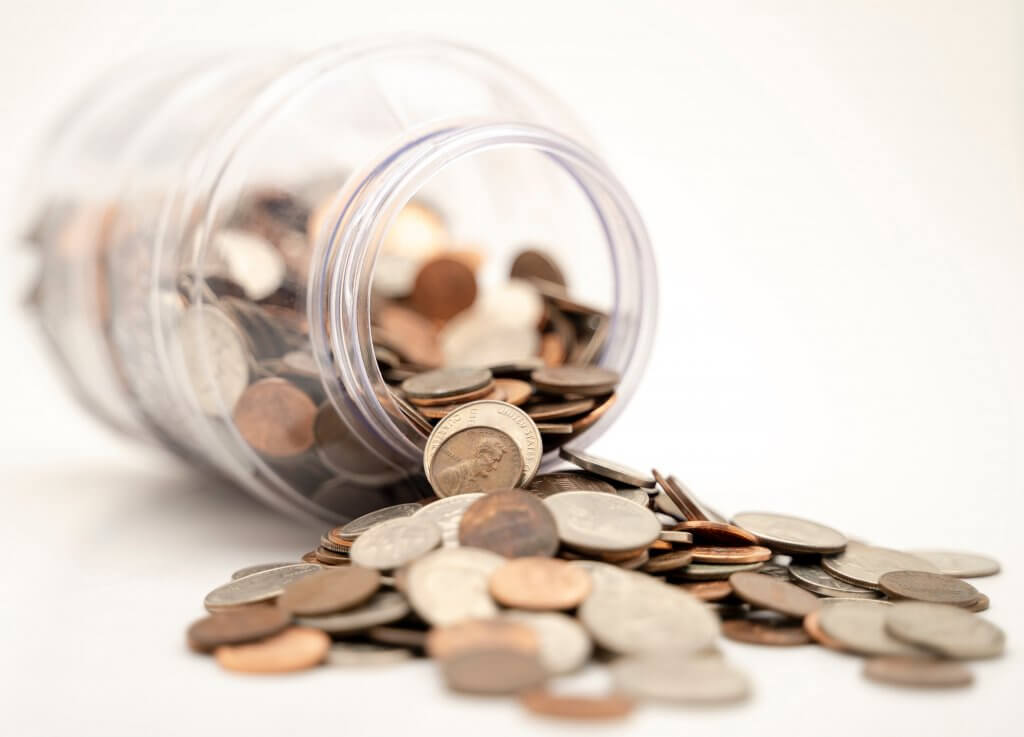
Talk over your thoughts with your husband, and then explain the new plan to your children well in advance. Prepare them and remind them before each shopping excursion of any kind for a while.
Stick to your guns, be consistent, and don’t feel guilty about it. Remember that if you want to teach your child to be responsible for their things consistency is key.
Work on your shopping habits by planing ahead of time what you will buy, having a list, and sticking to it.
3. Buy quality
Have the mindset to own just a few things of good quality, rather than many things of poor quality. Get the best quality you can afford for the least amount of money.
This rule applies to your toys, clothes, furniture, electronics–everything.
You may think that, with small children, you should buy poorer-quality items, because your children will break them. But, this mindset will backfire.
While I understand your thinking, I ask, “What does that teach a child?” It teaches them to abuse their belongings because they didn’t cost very much, but the goal is to teach your child to be responsible for their things.
Don’t we need to take care of everything we’re privileged to have as good stewards? You do not want to teach them that only expensive and “nice” things have worth, and it’s ok to break and abuse cheaper and poorer-quality belongings.
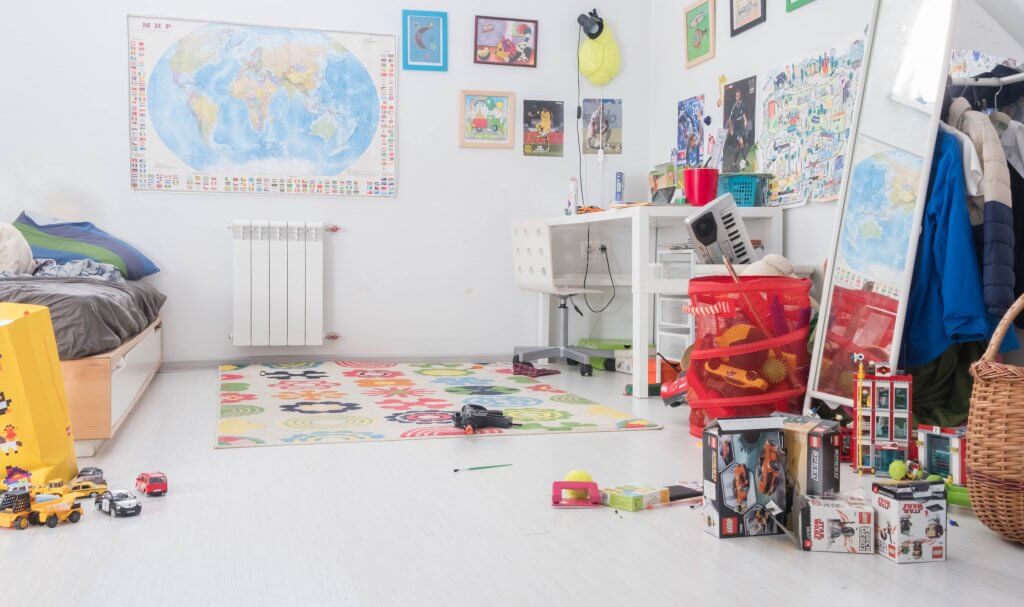
4. Teach your children to take care of all belongings
I understand the premise, but you want to teach your children to take care of their things, no matter how much they cost. No matter what quality the item is, you want to teach your children to take care of their possessions.
And teach them to show respect for other people’s belongings, no matter how much they cost, or what quality.
You will spend more, in the long run, buying poor-quality items over and over again. There will be a higher cost in time, money, and frustration than if you purchased a better-quality item in the first place.
I’m not saying you should buy costly things, but buy the best quality you can afford for the least amount of money, and then buy only a few. “Give away, throw, or sell one thing when you bring home another,” is a motto many find helpful.
5. Have a place for everything
Everything needs to have a home and your kids need to know where it is.
Even if it’s not the “perfect” place, know where it is that you will put it away, and teach your children where that is. You can always change where you store it later on but have a designated place for each item from the moment it comes into your home.
I recommend you decide before you buy it whether you have a place to store it or room for it, and where that will be. This practice may cause you to own fewer things and save you money in the long run!
Teach your children to practice this by asking them while still in the store where they will keep or store the item they’re considering buying, and it will save you countless headaches later on.
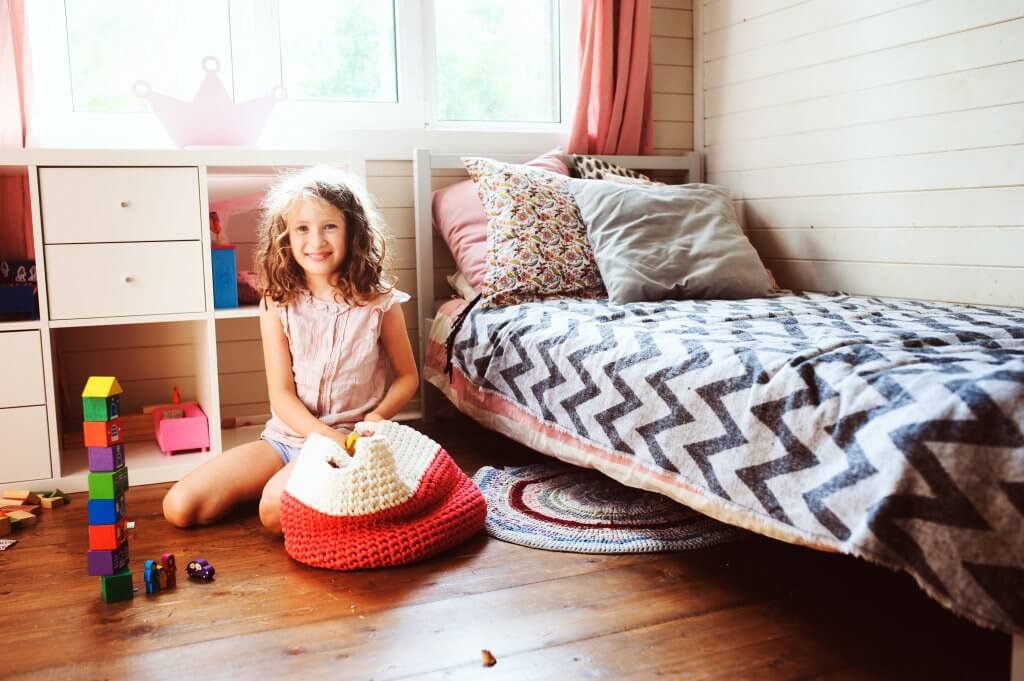
6. Create organizing routines
Set specific times each day that organizing needs to be done. To teach your child to be responsible for their things, routines work well.
We found it helpful to have several times a day designated as organizing times. “Let’s pick up.” One time was immediately after breakfast. We cleaned up the kitchen, then picked up the main areas of the house, and it became a habit.
Another perfect time to pick up is just before Daddy comes home from work. “Let’s pick up for Daddy! Daddy’s coming home!” Make it a highlight of the day that encourages honor for Daddy and cements a habit of organization in children.
We also had one day a week when we scheduled time for organizing and cleaning. We spread out the task of cleaning the house over the whole week, but Mondays were our day to put the house to rights.
It seemed that on weekends when we were busy with many activities, we would mess up the house, so it worked to dedicate the first weekday to this.
If your children are school-aged, picking up, organizing, and doing their chores, along with you, will keep your home in order and clean.
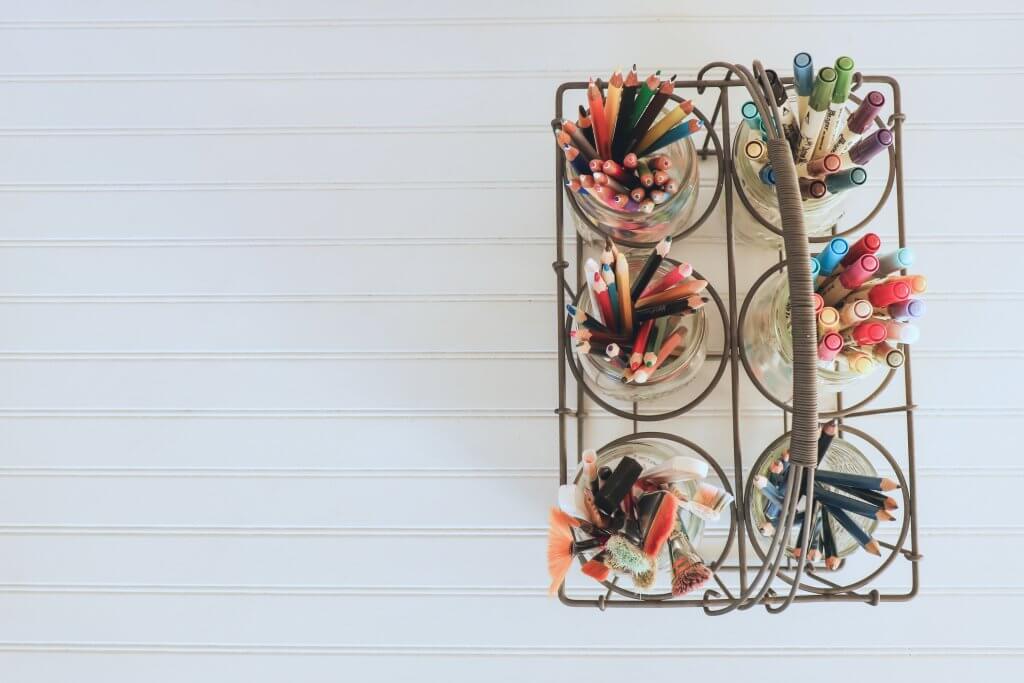
7. Compartmentalize and sort
Children’s toys, clothing, and accessories tend to be small. I have found it helpful to compartmentalize smaller items in containers, inside of drawers, on shelves, and inside closets.
These simple storage containers for kids things can be plastic, wood, cloth, or baskets, whatever you want, but I recommend they be decorative if left out where people can see them. In that case, make them part of your home decor.
Storage Containers as Home Decor
Open baskets and bins are more accessible for children to use, and thus, you’ll have more success with teaching organization because children are more likely to use what is easier to use.
The more steps that we have to go through to put something where it belongs, the less likely we are to do so. That goes for adults, as well as children.
For example, an open basket on an open shelf, or just inside a drawer, is more likely to be used for your daughter’s hair bows and baubles than a closed box inside her closet.
An open bin for your son’s small Matchbox cars will be more likely used to put them away. It can be stored under a bed or on the floor of his closet. The container can have a cover if you’re concerned about dust, but remember that if he has to pull it out and remove the cover, it is less likely to happen.
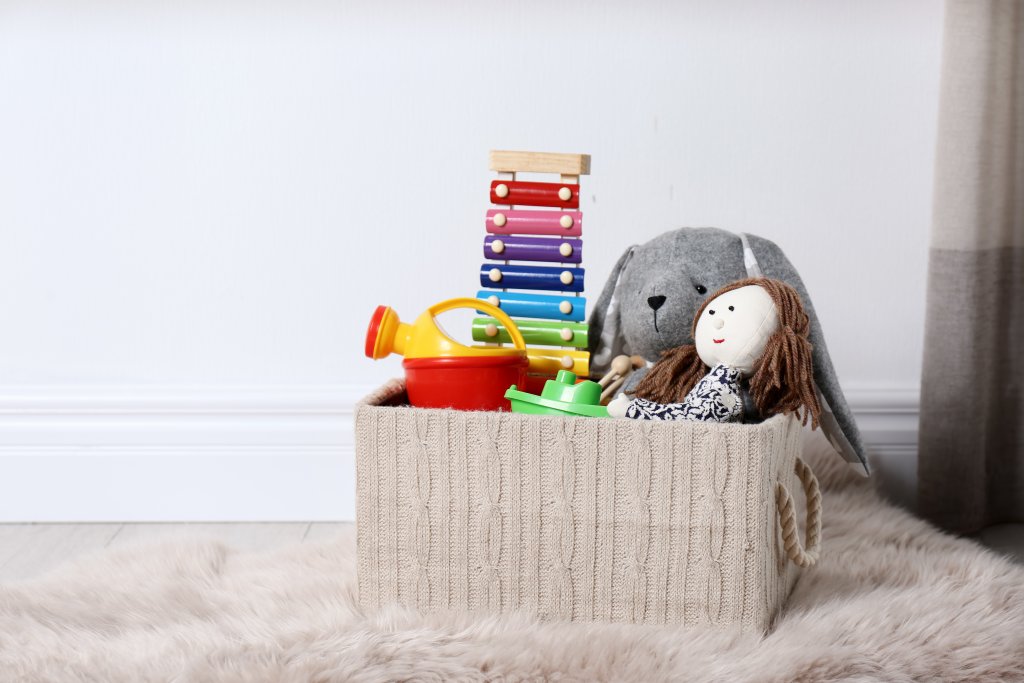
Baskets as Storage For Children’s Belongings
Out in the open, you will probably want it to be attractive. I find baskets handy storage containers because they’re cute, sturdy, unbreakable, and they last for years, if well-made.
A basket can hold your little girl’s hair baubles, and later, as she grows, keep her makeup organized. Baskets are very versatile.
8. Teach by example, first.
Be a student of organization and let your children see you learning and applying what you learn. If you want to teach your child to be responsible for their things, you need to first be reponsible with yours.
Read books, watch videos, and take courses on organizing. Don’t be afraid to try new systems. But, don’t implement too many new policies all at once. And, give a new system a chance before deciding it’s no good.
Always prepare your family for changes. Don’t suddenly thrust a complicated system on them. Sit down with them and talk about what you plan to do.
Even small children will respond better if you do this. Calmly and clearly show them how it works.
Make Your Children Part Of Organizing
It is essential that children feel that they and their belongings are respected. Do not go into their room when they’re not there to seize and throw away belongings that you think should go.
To teach your child to be responsible for their things they need to be part of the organizing and decluttering processes.
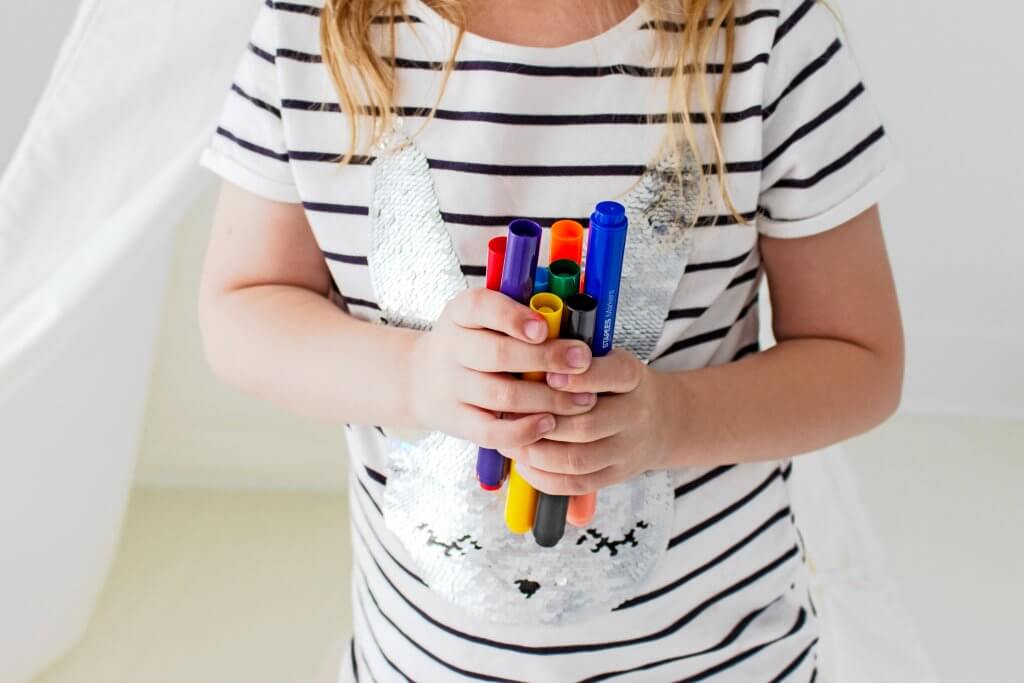
9. Give your children choices
Give them a chance to decide what to keep and what to throw or give away. Let them be part of the planning of where to store things and how.
Giving a choice of one or two toys, and one or two storage options that are equally acceptable to you will go a long way towards cooperation.
They may get excited about the storage systems and keeping things more orderly if they have been a part of choosing them.
Praise order and every small effort towards it. Start when your children are small. Implement small systems.
For instance, it is helpful to require children to clean up and put away one item or toy before taking out another. And, to have specific times when you all put things away and pick up.
Then, make the process as easy and painless as possible by having a place for everything and training your child to put things where they belong. Teach, praise, teach some more. Expect that they will learn and eventually grow up.
Seek Systems That Work, Not Perfection
Tweak the systems and improve them. Try new systems. Organize areas of your home, moving from room to room.
Start with the main areas of the house, and then move on to the bedrooms. Have a place for their toys, and sort them.
Keep the number of toys lower, by asking relatives to give non-toy gifts that are from a list you give them. We established a tradition of giving each child a book, a game, and a pair of pajamas for Christmas.
Also, you can switch out toys, stuffed animals, and other possessions that are threatening to take over, seasonally.
When Christmas toys do come, let them play with one or two, removing the others for a time, and then trade. If the hidden away toys are not missed or asked for, talk to your children about possibly giving them to another child who would enjoy them more.
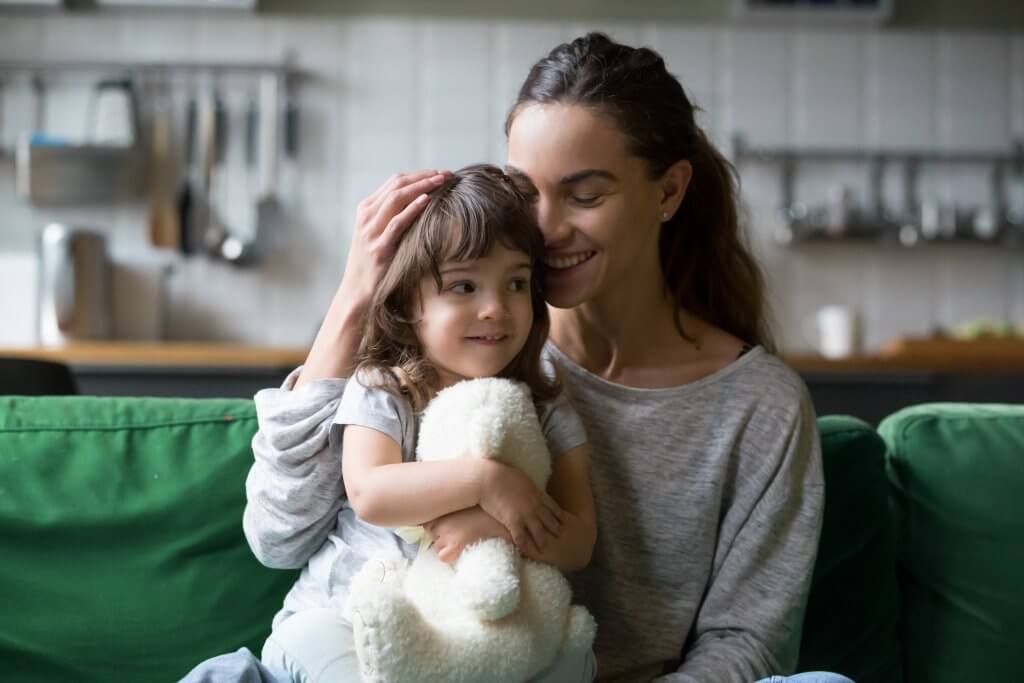
10. Do not expect perfection
Do not expect your children to become perfectly organized. Even as an adult, we don’t reach organizing perfection. We are all working at the organization of our belongings our whole life long.
Seek progress, not perfection.
You will never finish, but you can and will arrive at a place where you love your home, and feel at peace there if you practice these simple steps.
Teach your child to be responsible for their things
If you consistently teach, train, and model how to be responsible and keeping things orderly in your home, there will come a time when your children take good care of their belongings and come up with systems themselves. You will have children who keep their treasured belongings organized and orderly. They will grow up.

Wendy Gunn writes at Your Home for God to help overwhelmed moms grow spiritually with joy, raise Godly children, and get their lives organized through Mentorship, Courses, and Coaching. You can find her on her blog, Pinterest, and Facebook.
Want to stay up to date with The Simplicity Habit? Sign up on the form below and get weekly tips on simplifying and decluttering your home and your life. You’ll also get the 8 Quick Wins for Decluttering Checklist.

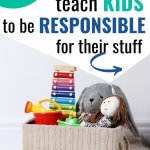
loved this
If my kids asked for something when we were out I’d usually suggest we put it on their birthday or Christmas list